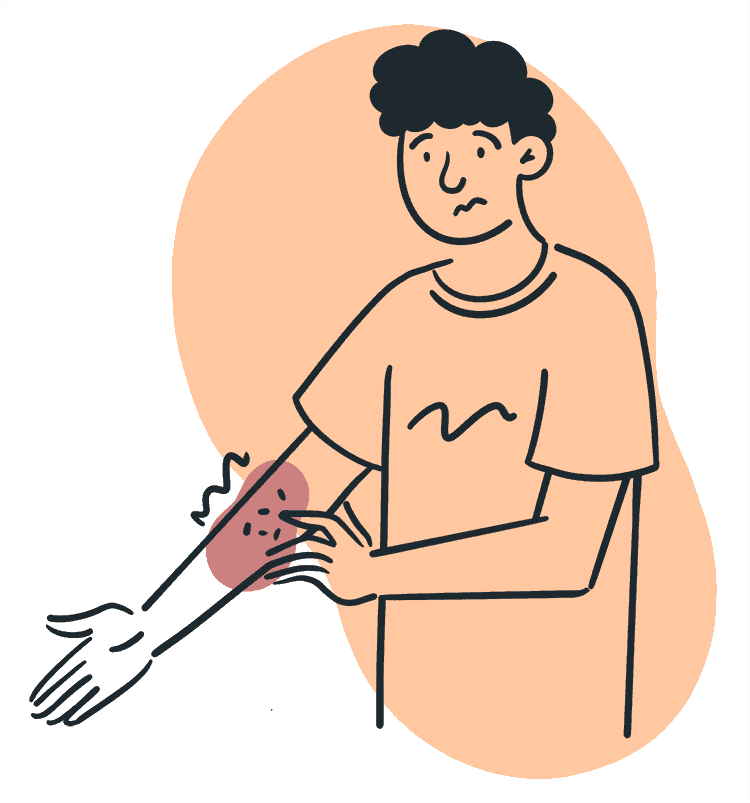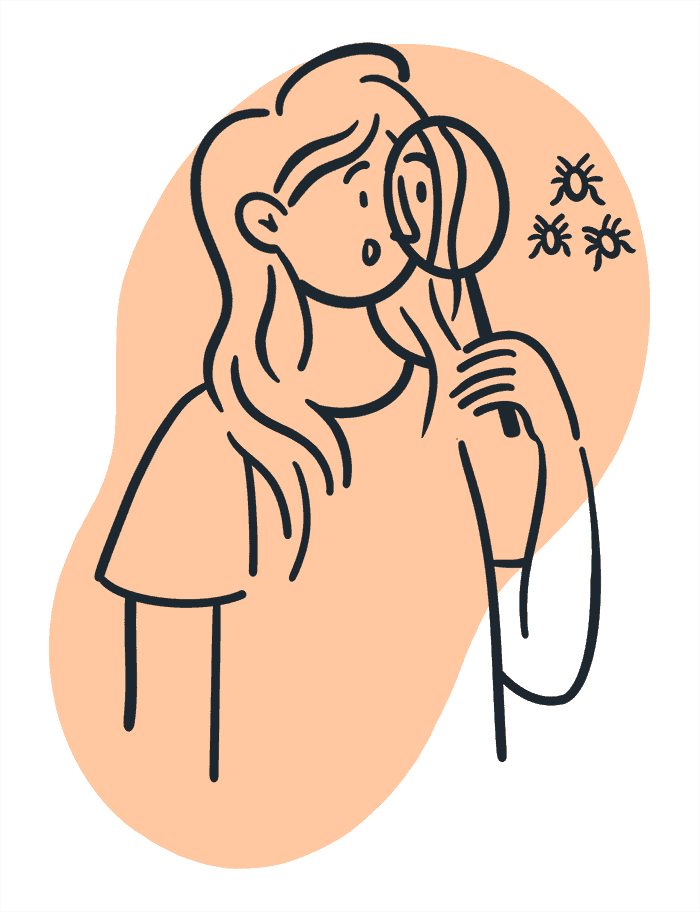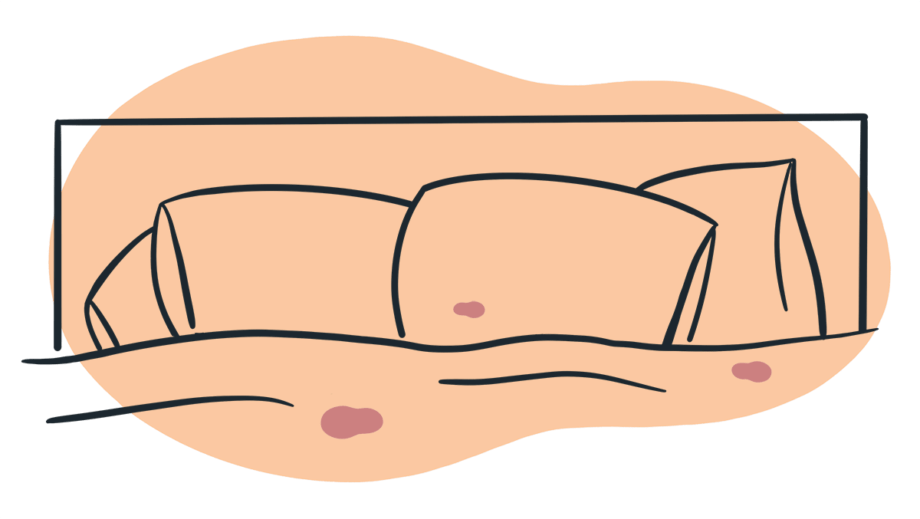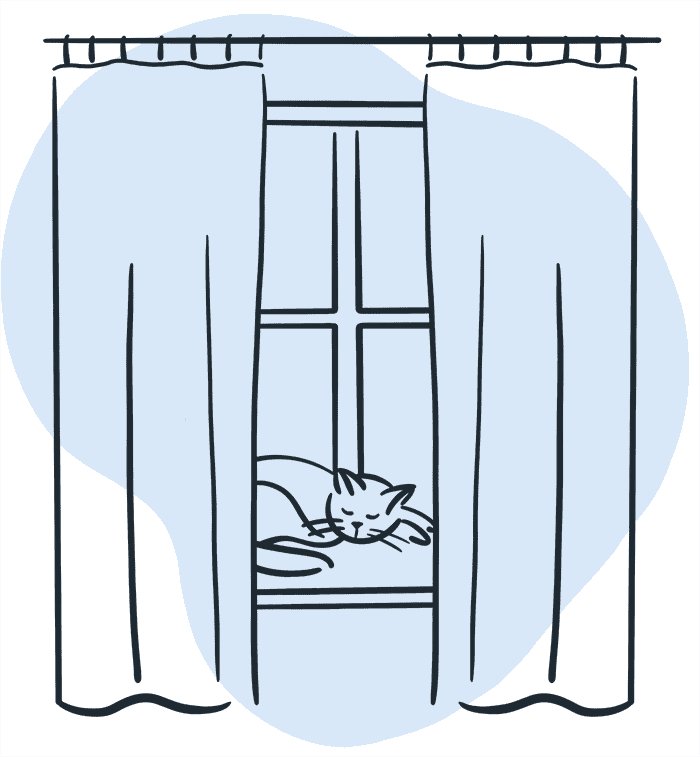Home Remedies for Bed Bugs
Disclosure: By clicking on the product links in this article, Mattress Nerd may receive a commission fee at no cost to you, the reader. Read full disclosure statement.

If you’ve ever dealt with bed bugs, you know how truly pesky they can be. Bed bugs don’t discriminate. They’re not just found in filthy environments. They’ve been discovered lurking in some of the finest hotels and homes. These unwanted house guests take up residence anywhere there are sources of food—people and pets. And when they move in, it’s hard to get them out.
Nearly 97% of pest professionals have treated bed bugs in the past year, according to the 2018 Bugs Without Borders Survey conducted by the National Pest Management Association. And according to the professionals, the prevalence of these pests is increasing. More than half of pest control professionals say they receive the most complaints of bed bugs during the summer when most people are vacationing and students are returning home from college.
Bed bugs are tiny, blood-sucking insects. Mature bed bugs have flat, oval, brownish bodies. But after they feed, their bodies swell and their color turns reddish. They don’t fly, but they can move quickly across floors, walls, ceilings, furniture, and mattresses.
Female bed bugs lay hundreds of dust speck-sized eggs during her lifetime. Once hatched, these immature bed bugs, called nymphs, shed their skin five times as they feed, grow, and mature.
Bed bugs become most active at night and feast on humans and animals while they’re sleeping. These tiny creatures latch onto skin through an elongated beak, like a straw, that sucks the blood of its prey from three to 10 minutes before becoming engorged and crawling away. The bites are painless when they occur and don’t usually wake people. But over the next few hours, they turn into itchy welts.
Bed bug bites usually occur on the ankles, arms, or shoulders and often in straight rows on the skin. They often go away without treatment or with over-the-counter antiseptic lotions or antibiotic creams. Corticosteroid creams and oral antihistamines can help with the unbearable itching.
The good news is that bed bugs are not thought to carry diseases like other pests such as ticks or fleas. But they can be extremely difficult to treat. However, it’s not impossible. The first step is to identify whether you have a bed bug problem in the first place.
Identifying a Bed Bug Problem
Bed bugs are often mistaken for other pests, like fleas, ticks, baby cockroaches, mites, and even headlice. The secret to ridding yourself of any pest problem is to know what kind of bug you’re dealing with.

Bed bugs are often mistaken for other pests, like fleas, ticks, baby cockroaches, mites, and even headlice. The secret to ridding yourself of any pest problem is to know what kind of bug you’re dealing with.
What to Look For
Shedded Skins: Bed bugs molt and shed their skin before each new life stage—up to five times before they reach maturity. You can find these shedded skins lying around areas of infestation such as in mattress creases. Fecal matter: This is really gross, but bed bugs leave fecal deposits after they consume a blood meal. They look like tiny black specks of dust and can easily be seen on bed linens, mattress covers, and mattresses.Eggs: Bed bug eggs are very tiny but you can still see the small, narrow whitish-to-translucent eggs if you look closely enough in places such as inside your mattress’s creases and crevasses.
Odor: In a building with a heavy bed bug infestation, there is often a telltale odor. “Although bed bug dogs can detect a small number of them, a heavy infestation leaves an odor comparable to coriander,” says Dr. Nancy Troyanom, a board certified entomologist for Elhlich Pest Control.
Blood: Bed bugs are bloodsuckers. That means little droplets of blood may escape from your skin during or after a bed bug feeding. So, you may find smears of blood or spots of blood on your mattress, couch or chairs.

Live Bed Bugs: Bed bugs are tiny, blood-sucking insects about the size of an apple seed. Mature bed bugs have flat, oval, brownish bodies. But after they feed, their bodies swell and their color turns reddish. Nymphs are white in color but darken as they reach maturity.
Where to Look
“Bed bugs earned their name for their fondness for infesting beds,” Dr. Troyano says. “The small, brownish insects prefer to hide in close proximity to their hosts so they can sneak out at night and draw a blood meal without being noticed.”
Look for bugs in their usual hiding spaces:
- Near mattress tags
- On box springs
- Cracks in the bedframe and headboard
- In the seams of the mattress
But that’s not the only place they roam, adds Jacob Lander, owner and founder of Bug Zapper Pest Control. “While sleeping locations are definitely hotspots, I’ve found and treated bed bugs in call centers, office buildings, community centers and other locations where people don’t even sleep but simply spend long periods of time sitting in a chair.”

Other places to check include:
- In the seams of chairs, couches, and cushions
- Curtains
- Furniture joints
- Electrical outlets
- Under loose wallpaper or wall-hanging pictures or décor
- On wall crevasses such as where baseboards meet the sheetrock.
Three Steps to Getting Rid of Bed Bugs
Getting rid of bed bugs is a process. The amount of time it takes to rid yourself of bed bugs depends on the severity of your infestation and the thoroughness of your treatment. Here are the four steps to get rid of bed bugs for good.
Step One: Target Ground Zero—Your Bed
Beds are typically ground zero for bed bugs. Mattresses, box springs, headboards, and bed frames hold plenty of cracks and crevasses where the pests can hide out as they wait for a host to snuggle in bed so they can feast. When fighting a bed bug infestation, the first thing to do is tackle your bed:
- Start by removing all bed linens—comforters, blankets, sheets, mattress pads, pillows, etc.—and putting them into a large, plastic garbage bag. Then tie the top closed so no bed bugs escape.
- Take the bag to the washing machine and dump the linens directly into the washer. Tie the top of the empty garbage bag and dispose of it outdoors. Wash the linens in hot water and dry them on high heat, if possible. Bed bugs cannot tolerate high temperatures so this process should kill the bugs and their eggs.
- While the bed linens are washing, remove the mattress and the box springs from the bed frame. If the infestation is bad, you may want to dispose of your mattress altogether and get a new one. Otherwise, you can vacuum the mattress, especially at the seams, tags, and handles. Also vacuum along the bed frame and headboard, making sure to target the joints. After vacuuming, be sure to remove and dispose of the vacuum bag or, in bagless vacuums, ensure the contents of the vacuum’s bin are thoroughly emptied outside the home. Pro tip: For best results, use a vacuum cleaner with a sealed HEPA filter.
- Vacuuming your bed frame and mattresses removes surface bed bugs. To get bed bugs deep inside the mattress or in furniture joints and crevasses, follow up with a steamer. Remember, bed bugs cannot tolerate heat.
- Once the mattress has been vacuumed, steamed, and has dried, spray the joints with a contact insecticide especially for bed bugs, such a PT Alpine, says Wesley Wheeler, a former exterminator and owner of Bug Lord, a leading DIY pest control website. This will effectively kill the pests.
- Since the spray leaves no residual protection, follow up with a powder insecticide such as Cimexa, Wheeler says. This will kill any returning bed bugs for the next several weeks.
- After your bed and mattress has been treated, use certified mattress and box spring encasements to protect your bed. This prevents bed bugs from getting into or escaping from your mattress.
- Now, you can reassemble your bed and put the newly laundered sheets back on.
Step Two: Keep Bed Bugs From Getting to Your Bed
Bed bugs are adventurous little creatures and will make every effort to get to a source of food (blood). “Bed bugs can move pretty quickly with adults crawling up to five feet in one minute,” Dr. Troyano cautions. But they can’t jump or fly. So, isolate your bed to prevent bed bugs from accessing it.
- Tuck up bed skirts and bed spreads so they don’t touch the floor, or remove them altogether.
- Move the bed a few inches from the wall.
- Remove any storage under the bed.
- Place interceptors under the legs of your bed. These cup-shaped disks have an outer “moat” that traps bed bugs and prevents them from climbing up the legs of your bed.
Step Three: Tackle the Rest of the Room
Bed bugs can actually hang out in other places throughout your bedroom, so you’ll want to treat other potential hiding spots in the rest of the bedroom.
- Pick up any clutter on the floor such as shoes or clothing.
- Launder what items you can in the washing machine.
- For items that can’t be laundered, put them in a dryer on high heat for at least 45 minutes, if possible.
- Consider placing other items, such as books or shoes, in a bug heater.
- Just as you did your mattress and bed frame, vacuum, steam, spray, and powder cracks and crevasses in furniture and walls in the rest of the bedroom. This includes the crack between the baseboard and sheetrock, behind pictures and other wall décor, around windows and doorways, and on the floor.
- Because bed bugs can also travel through walls, you may want to treat adjoining rooms in your house as well.
Preventing Bed Bugs from Returning
The spaces you treated will need retreating in about two weeks later and then two weeks after that for a total of three treatments. This will ensure that all the bed bugs from your infestation have been killed. The next steps are preventing bed bugs from getting back into your house.
- Consider buying a mattress resistant to bed bugs, such as a latex mattress. Natural latex is denser than most mattress materials and can be a deterrent to burrowing bed bugs. However, they may still be able to slip into the space between the mattress and your box spring.
- Pick up clutter. “The fewer spots for hiding there are in your house, the lower the possibility for an infestation,” says Nicholas Martin, founder and editor-in-chief of Pest Control Hacks.
- Repair your house including sealing all cracks and crevices in walls and furniture. “It’s also highly important to seal all the holes in the walls that you share with neighbors as bed bugs may travel even through tiny holes. Pipe and wire entry holes are the most convenient tunnels for them. Peeling wallpapers are also great hideaways, to consider painting walls instead or buy new wallpapers,” Martin says.
- Inspect second-hand furniture with a flashlight before bringing them into your car or home. “Second-hand furniture is the most common source of bed bugs around the world,” he adds.
- Inspect used cars. Bed bugs can spread from one car in the garage to another. Be sure to inspect all the seats and the trunk for signs of bed bugs.
- Monitor your house for bed bugs. Check for the telltale signs of the pests in cracks and crevices, outlets, under carpets, on couches and beds, etc. “They can be virtually anywhere, so be very attentive. Early infestations can go without any stains and visible droppings, so use an old credit card cut into a triangle to slide it through seams and crevices and chase the bugs out,” Martin says.
- Check hotel rooms. Bed bugs are often found in hotel rooms. Be sure to check the bedding after checking in and request a new room if you see anything suspicious. If a room is infested, bed bugs can also creep into your suitcase so refrain from placing your suitcase directly on the floor or bed.
Final Thoughts
Dealing with a bed bug infestation is a nightmare. It is possible to get rid of the pests on your own, but it takes a lot of time, methodical work, and patience.
If ridding your home of bed bugs seems too daunting a task to do on your own, you can call a professional exterminator. However, this can cost about $300 or more per room and upwards of $1,500 or more for an entire house depending on the level of infestation.
Some companies offer a far less expensive alternative—DIY bed bug extermination kits which include items such as spray and powder insecticides, mattress and box spring encasements, furniture leg interceptors, and heated bed bug units. But be aware that you must be extremely thorough in your treatment or else the bed bugs may return.
If you suspect you have a bed bug problem, the first thing to do is act quickly. Delaying treatment will only make the infestation worse. Fast and effective treatment will stop bed bugs bites so you can sleep tight.